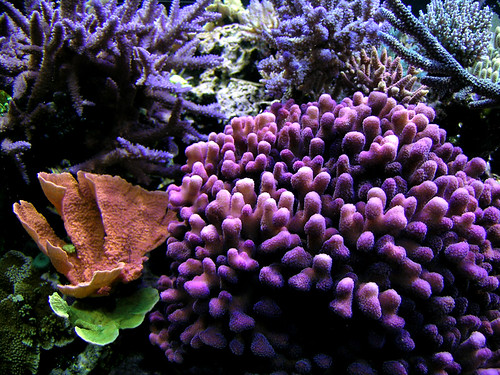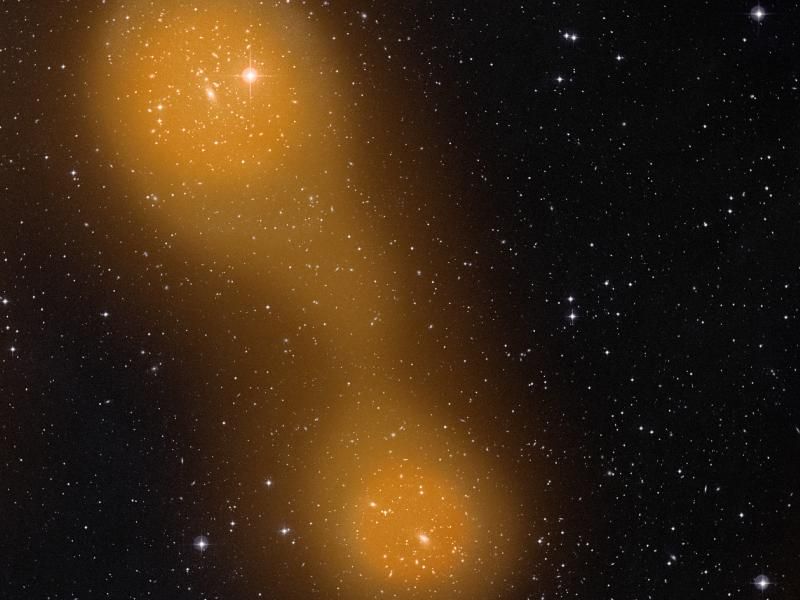Here we are once again. Monday arrives and the time for science talk is upon us. Time to brighten your day with selections from science sites across the globe. New discoveries, new takes on old knowledge, and other bits of news are all available for the perusing in today's information world. Today's tidbits include when the stars first blinked on, the impact of climate change on rare plants may vary widely, scientists discover the oldest dinosaur or closest relative yet, what howler monkeys can tell us about the role of interbreeding and human evolution, and massive crevasses and bendable ice affect the stability of the Antarctic ice shelf.
Pull up that comfy chair and grab a spot on the porch. There is always plenty of room for everyone. Another session of Dr. Possum's science education, entertainment, and potluck discussion is set to begin.
Featured Stories
As astronomers continue to peer farther back into time the earliest times of the universe may be approached at last.
(Researchers) have peered far back in time, to the era of the first stars and galaxies, and found matter with no discernible trace of heavy elements. To make this measurement, the team analyzed light from the most distant known quasar, a galactic nucleus more than 13 billion light-years from Earth.
These quasar observations provide a snapshot of our universe during its infancy, a mere 750 million years after the initial explosion that created the universe. Analysis of the quasar’s light spectrum provided no evidence of heavy elements in the surrounding gaseous cloud — a finding that suggests the quasar dates to an era nearing that of the universe’s first stars.
As
climate change continues over time the effects on various plants are under study with various effects to be found.
While some species will react to climate change by moving upslope, others will move downslope, driven by changes in seasonality and water availability. The researchers believe that this predicted variation, together with the long-term isolation and relative climatic stability of the mountains, may shed light on historical processes behind current patterns of biodiversity.
The
earliest dinosaur was about the size of a Labrador retriever and walked the earth 10 million years before more familiar dinosaur species.
The findings mean that the dinosaur lineage appeared 10 million to 15 million years earlier than fossils previously showed, originating in the Middle Triassic rather than in the Late Triassic period.
(snip)
The bones of the new animal reveal a number of characteristics common to early dinosaurs and their close relatives. For example, the bone tissues in the upper arm bone appear as if they are woven haphazardly and not laid down in an organized way. This indicates rapid growth, a common feature of dinosaurs and their close relatives.
Studies of
two different species of howler monkeys may help resolve some thorny genetic issues of human evolution.
The two primate species in the study, mantled howler monkeys and black howler monkeys, diverged about 3 million years ago and differ in many respects, including behavior, appearance and the number of chromosomes they possess. Each occupies a unique geographical distribution except for the state of Tabasco in southeastern Mexico, where they coexist and interbreed in what's known as a hybrid zone.
The researchers found that individuals of mixed ancestry who share most of their genome with one of the two species are physically indistinguishable from the pure individuals of that species.
Findings may help clarify the differences between genetic analysis and the fossil record in human evolution.
Scientists studying the summer ice in the Antarctic ice shelf found deep crevasses tending to lend to ice breakage as well as different types of ice which lend more stability to the ice pack.
The scientists used ground penetrating radar to map out the basal crevasses, which turn out to be massive. The yawning cracks can run for several miles in length and can penetrate upwards for more than 750 feet. While the basal crevasses have been a part of Larsen C for hundreds of years, the interaction between these features and a warming climate will likely make the shelf more susceptible to future disintegration...
The research team also studied the impact of suture zones in the ice shelf. Larsen C is fed by 12 distinct glaciers, which dump a steady flow of thick ice into the shelf. But the promontories of land between the glacial outlets, where ice does not flow into the shelf, allow for the creation of ribbon-like suture zones, which knit the glacial inflows together and which turn out to be important to the ice shelf’s resilience...
The suture zones get their malleable characteristic from a combination of ice types. A key component of the suture zone mixture is formed when the bottoms of the 12 glacial inflows begin to melt. The resulting freshwater is more buoyant than the surrounding seawater, so it rises upward to the relatively thinner ice zones between the glacial inflows, where it refreezes on the underside of the shelf and contributes to the chaotic ice structure that makes suture zones more flexible than the surrounding ice.
Knucklehead's Photo of the Week
My Friend`s Tank

©Knucklehead, all rights reserved, presented by permission. (Click on the image to see more in the same series.)
Other Worthy Stories of the Week
Some stunning pictures of snow
Astronomers discover and 'weigh' infant solar system
First every hyperspectral images of Earth's auroras
Satellite reveals new views of Earth at night
NASA's GRAIL creates most accurate moon gravity map
Small patches of native plants help pollination processes in large farms
Astronomers ask public to find star clusters in Hubble images
Drought in the Horn of Africa delays migrating birds
Hubble sees a galaxy hit a bullseye
Plant stress paints an early picture of drought
The nighttime Earth from space as you have never seen it before
Galaxy-wide echoes from the past
Plant growth in zero gravity
For even more science news:
General Science Collectors:
Alpha-Galileo
BBC News Science and Environment
Eureka Science News
LiveScience
New Scientist
PhysOrg.com
SciDev.net
Science/AAAS
Science Alert
Science Centric
Science Daily
Scientific American
Space Daily
Blogs:
A Few Things Ill Considered Techie and Science News
Cantauri Dreams space exploration
Coctail Party Physics Physics with a twist.
Deep Sea News marine biology
List of Geoscience Blogs
Science20.com
ScienceBlogs
Space Review
Science Insider
Scientific Blogging.
Space.com
Techonology Review
Tetrapod Zoologyvertebrate paleontology
Wired News
Science RSS Feed: Medworm
The Skeptics Guide to the Universe--a combination of hard science and debunking crap
At Daily Kos:
This Week in Science by DarkSyde
Overnight News Digest:Science Saturday by Neon Vincent. OND tech Thursday by rfall.
Pique the Geek by Translator Sunday evenings about 9 Eastern time
All diaries with the DK GreenRoots Tag.
All diaries with the eKos Tag
A More Ancient World by matching mole
Astro Kos
SciTech at Dkos.
Sunday Science Videos by palantir
NASA picture of the day. For more see the NASA image gallery or the Astronomy Picture of the Day Archive

A Bridge of Hot Gas Connects Two Galaxy Clusters, NASA, Public Domain


